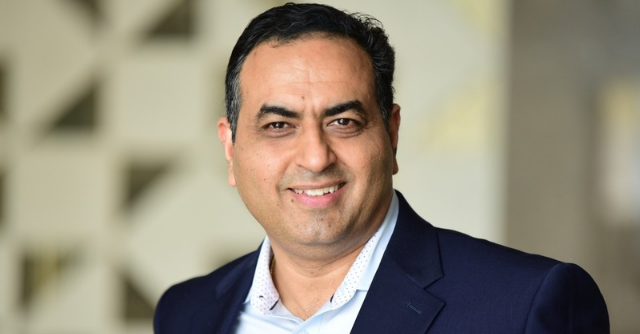
Aim to be completely cloud-native company in 2-3 yrs: Kimberly Clark’s Ray Bajaj


Kimberly-Clark is a multinational corporation specialising in consumer goods, particularly in personal care and hygiene. Headquartered in Irving, Texas, the company is best known for brands such as Kleenex (facial tissues), Huggies (nappies), Kotex (feminine care products), and Scott (toilet paper). The company is now undertaking a digital transformation, shifting from a region-based to a segment-based operation. In this context, TechCircle interviewed Ray Bajaj, the Chief Data & Technology Officer at Kimberly-Clark. Edited excerpts:
What is Kimberly-Clark’s digital transformation strategy?
We are a global company operating in 170 countries, with 12 brands under our umbrella. We are currently working on three pillars of business transformation: reimagining marketing with personalised content, digitising supply chains to improve margins, and transitioning to segment-based operations to enhance customer and shareholder value.
All of our business transformation efforts are powered by technology and data. We are undertaking a full-stack transformation to become a technology-first, data-driven organisation. As part of this, we are transitioning to a fully cloud-native organisation, leveraging the cloud to modernise our infrastructure.

Our second focus is becoming a data-driven organisation by centralising all data as a first-class corporate asset and the backbone of our operations. Our third strategic pillar is using analytics at scale to drive all business processes, from marketing and supply chain to manufacturing, R&D, and employee experience. This transformation is driven by AI-first initiatives, which automate manual tasks with machine copilots, enhancing overall efficiency.
How has your journey towards cloud adoption been so far? What remains to be done?
Over the past year, we have achieved more than 35% progress in our cloud transformation, migrating from our data centres to the cloud. We aim to complete this transition within the next two to three years. Our primary cloud provider is Azure, and we use APIs to connect our capabilities to a diverse ecosystem of applications.
We have centralised the majority of our data, integrating inputs from retailers, external sources, digital touchpoints, core operations, mills, and R&D into a unified data platform. This centralised approach ensures seamless access and utilisation across the organisation.

We are approaching our cloud transformation responsibly by refactoring applications instead of simply lifting and shifting them. This ensures a robust, secure architecture and a resilient cloud infrastructure. Our move to the cloud enhances security, boosts resilience, increases speed, and provides clear cost transparency for powering our business capabilities.
You mentioned the organisation is adopting a centralised approach to data. Could you elaborate on the initiatives undertaken to achieve this?
Our data transformation journey began with addressing decentralised data across our international businesses to improve data quality for better strategic decision-making. Today, the majority of our data is centralised, allowing for enhanced governance, proper cataloguing, and improved quality.
Our architecture is built on a virtual Lakehouse model, creating a virtualised data lake. While most of our data resides in Snowflake, we also use repositories like BigQuery, Google Cloud, and Amazon. Our key focus is to ensure connected, high-quality, well-governed data, ready for analytics.

Our data strategy is guided by four pillars: filling the lake, organising the lake, analysing the lake, and governing the lake. We have made significant progress across all four pillars, reinforcing our commitment to a robust, analytics-ready data ecosystem.
What are the key areas where the organisation is leveraging AI?
Across all functions—customers, suppliers, and employees—our processes are becoming increasingly intelligent, powered by AI and machine learning.
The supply chain is at the core of our operations, and we are revolutionising it with AI-driven analytics for demand planning, supplier planning, and S&OP planning. Our manufacturing facilities now utilise automated guided vehicles powered by AI and machine learning, alongside AI-enabled cameras that ensure product quality by detecting defects.

Generative AI is driving a massive transformation across the organisation, democratising intelligence much like the internet democratised information. Our supplier interactions are now facilitated by generative AI chatbots, enabling seamless tracking of invoice statuses. In manufacturing, we have leveraged 15 years of best practices, enabling mill operators to access process insights and operational details through generative AI chatbots.
In marketing, generative AI empowers our teams to create product campaigns, social media content, and brand materials, including creative copies, images, and videos. It also supports sentiment analysis, helping us understand customer perceptions and identify areas for innovation.
Tell us about your Bengaluru-based innovation centre. How will it grow in the coming years?
The digital transformation we discussed highlights the critical role of cloud and digital talent within our organisation, particularly in our Bengaluru-based Global Digital Technology Centre (GDTC), established in 2018.

Over the past five years, the India GDTC has grown eightfold and now houses top-tier talent, including cloud specialists, software and data engineers, data scientists, Scrum Masters, RPA engineers, and SAP experts. This investment is pivotal to our digital transformation, positioning the India GDTC not just as a global capability centre but as a hub for future innovation. Today, 40% of our global technology workforce is based at GDTC, and we have further plans to expand in India.
We have established diverse hiring pipelines to build a robust engineering talent pool at every level of the organisational ladder. Our approach includes active campus recruitment and internships to nurture fresh talent, complemented by an in-house Digital University that equips engineers with future-ready skills. This training ecosystem offers courses on cloud computing, Python coding, DevOps, and Robotic Process Automation (RPA), fostering continuous learning and upskilling. By integrating fresh graduates, training programmes, and seasoned leaders, we are building a future-ready engineering workforce.
